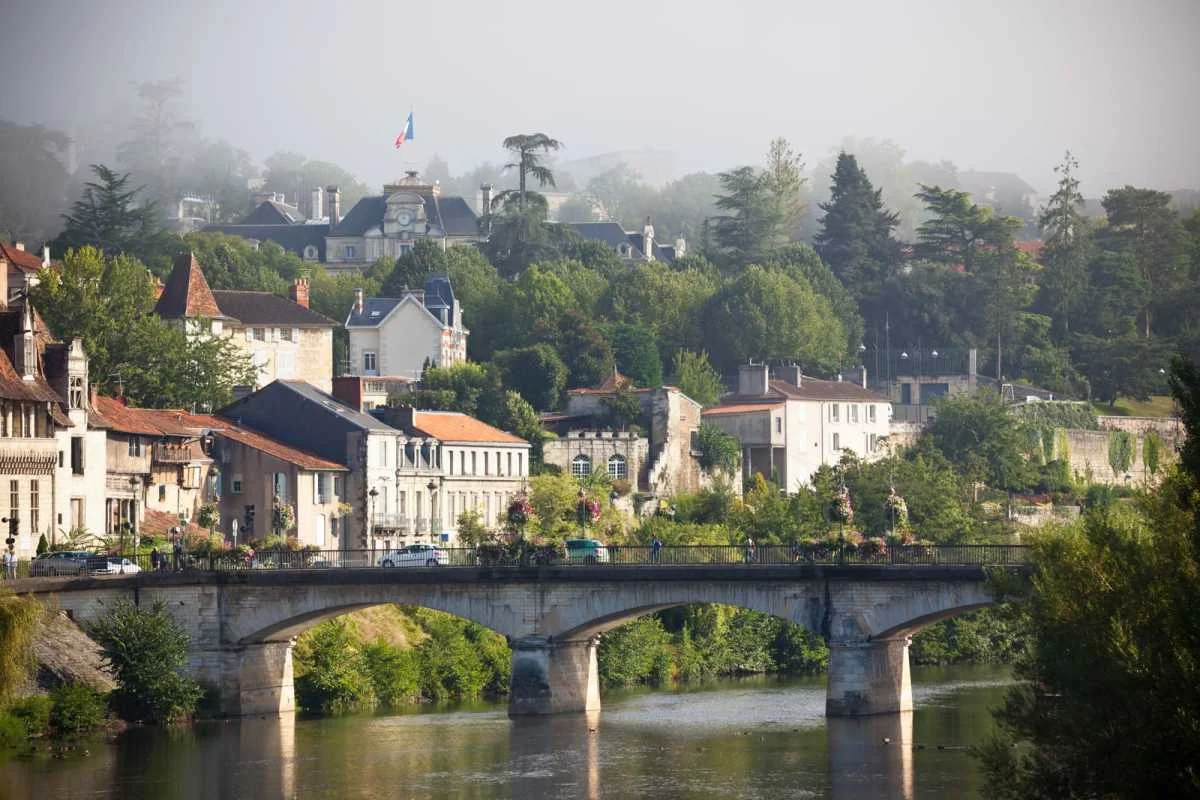If you’re dreaming of a weekend escape that blends old-world charm, stunning nature, and delicious food, Périgord should be at the top of your list. Tucked into the heart of southwestern France, this region (part of the broader Dordogne area) is like a living postcard—with hilltop castles, medieval villages, ancient caves, and sunflower-dotted countryside all within arm’s reach.
What makes Périgord especially great for a weekend trip is its diversity. The region is divided into four color-coded areas—Périgord Noir (Black), Vert (Green), Blanc (White), and Pourpre (Purple)—each with its own distinct character, ranging from forested river valleys to wine-rich vineyards.
Whether you’re a history buff, a foodie, or someone who just wants to soak up nature and unplug, you’ll find something here to fall in love with.
Getting There & Getting Around for a Weekend in Perigord
Getting for a weekend in Perigord is surprisingly easy—and once you’re there, exploring the region is half the fun.
If you’re flying in, the closest airports are Bergerac Dordogne Périgord Airport and Brive–Souillac Airport, both offering connections from major French and some international cities. For more flight options, Bordeaux–Mérignac Airport is approximately a 2-hour drive away and provides a broader range of international routes.
Prefer the train? The SNCF rail network connects you to towns like Périgueux, Sarlat-la-Canéda, and Bergerac from Paris, Bordeaux, and Toulouse. However, to truly experience the best of Périgord—especially those charming backroads, sleepy villages, and countryside views—a rental car is your best bet. You’ll have the freedom to set your own pace and discover hidden spots you’d never find by train or bus.
Pro tip: Download Waze or Google Maps ahead of time so you can use them offline. Cell service can be spotty in the countryside, and trust us—you don’t want to miss a turn on those winding hilltop roads.
Where to Stay: Charming Stays in the Heart of Périgord
One of the best parts of planning a weekend in Périgord? You’re spoiled for choice when it comes to unique and cozy places to stay. Whether you’re into elegant châteaux, rustic stone cottages, or romantic bed-and-breakfasts tucked into medieval towns, Périgord delivers charm in spades.
Sleep Like Royalty: Château Stays
If you want to go all out and soak up that fairytale French countryside vibe, consider staying in a local château. These historic estates offer a blend of old-world elegance and modern comfort, often set amidst vineyards, gardens, or wooded grounds.
One standout option? Château de Lasfonds. Located in a peaceful corner of Périgord, this 17th-century gem offers a dreamy escape that’s both authentic and luxurious. You’ll find classic stone architecture, tastefully decorated rooms, and easy access to major sights—all while enjoying serene, private surroundings.
B&Bs and Country Inns
If you’re more about cozy vibes and home-cooked breakfasts, Périgord is full of charming chambres d’hôtes (French-style B&Bs). Many are family-run, with hosts who take great pleasure in sharing local tips and stories. Look for stays around Sarlat-la-Canéda, Domme, or Beynac-et-Cazenac—they put you close to top attractions without the touristy feel.
Self-Catering Gîtes
Traveling with family or planning a more extended stay? A gîte (a vacation rental or cottage) gives you the freedom to cook, relax, and feel at home. You’ll find everything from riverside farmhouses to renovated stone barns, many with pools or private gardens.
No matter where you stay, book early—especially in spring and summer, when Périgord draws travelers from all over Europe.
Day 1: Medieval Towns, Castles & Caves
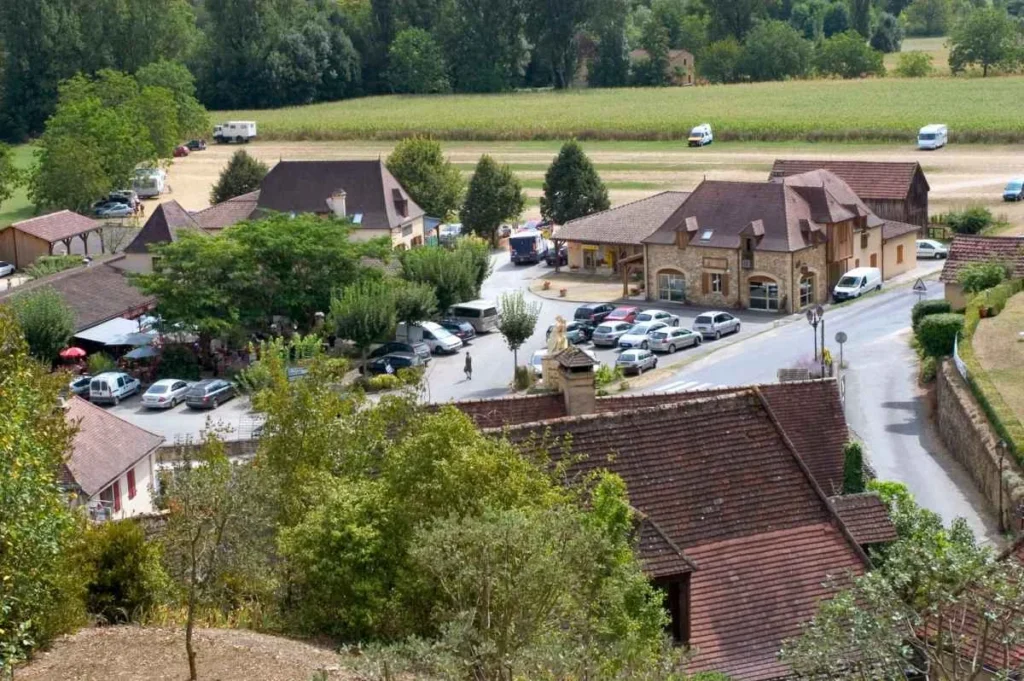
Your weekend in Périgord kicks off with a mix of history, scenery, and a little adventure. Today is all about diving into the region’s medieval charm and soaking up the Dordogne’s fairy-tale vibes.
Morning: Wander Through Sarlat-la-Canéda
Start your day in Sarlat-la-Canéda, one of the best-preserved medieval towns in France—and the unofficial heart of Périgord Noir. This town feels like a movie set, with golden-stone buildings, narrow cobbled lanes, and hidden courtyards around every corner.
If it’s Saturday, lucky you—it’s market day. Local producers fill the streets with stalls selling truffles, foie gras, cheeses, seasonal fruits, and a wide range of handcrafted goodies. Even if you’re not shopping, it’s worth it just for the atmosphere.
Don’t miss:
- Place de la Liberté (main square)
- The panoramic elevator inside the old church of Sainte-Marie
- A mid-morning treat at Maison Lemoine for walnut tarts or canelés
Midday: Explore Château de Beynac or Château de Castelnaud
A short drive from Sarlat gets you to some of the most iconic castles in the region.
- Château de Beynac towers dramatically over the Dordogne River. Once a stronghold during the Hundred Years’ War, it’s remarkably well-preserved and offers jaw-dropping views.
- Just across the river lies Château de Castelnaud, a medieval fortress transformed into a military museum, featuring full-scale trebuchets and ancient weaponry.
Either one makes a fantastic stop, but if you’re a history buff—or have kids—Castelnaud might edge out with its hands-on exhibits.
Afternoon: Canoe or Cruise the Dordogne River
After lunch (we’ll have food recs coming up), it’s time to relax—and the Dordogne River is perfect for that.
Rent a canoe or hop on a traditional gabare boat tour for a slow float past clifftop castles, quaint villages, and lush green banks. It’s peaceful, picturesque, and a classic Périgord experience.
Top launch spots:
- La Roque-Gageac
- Vitrac
- Beynac (return trip options available)
Expect routes to take 1–2 hours, depending on the distance and whether you’re paddling or cruising.
Evening: Dinner in Domme + Night Walk
Wrap up your first day in Domme, a bastide town perched high above the river valley. It’s quiet, beautiful, and offers one of the best sunset spots in all of Périgord.
Grab dinner at L’Esplanade, where the terrace view pairs perfectly with a duck breast and a glass of Bergerac red. Afterward, take a walk through the softly lit streets and imagine life here centuries ago—it’s not hard.
Day 2: Prehistoric Wonders & Natural Beauty
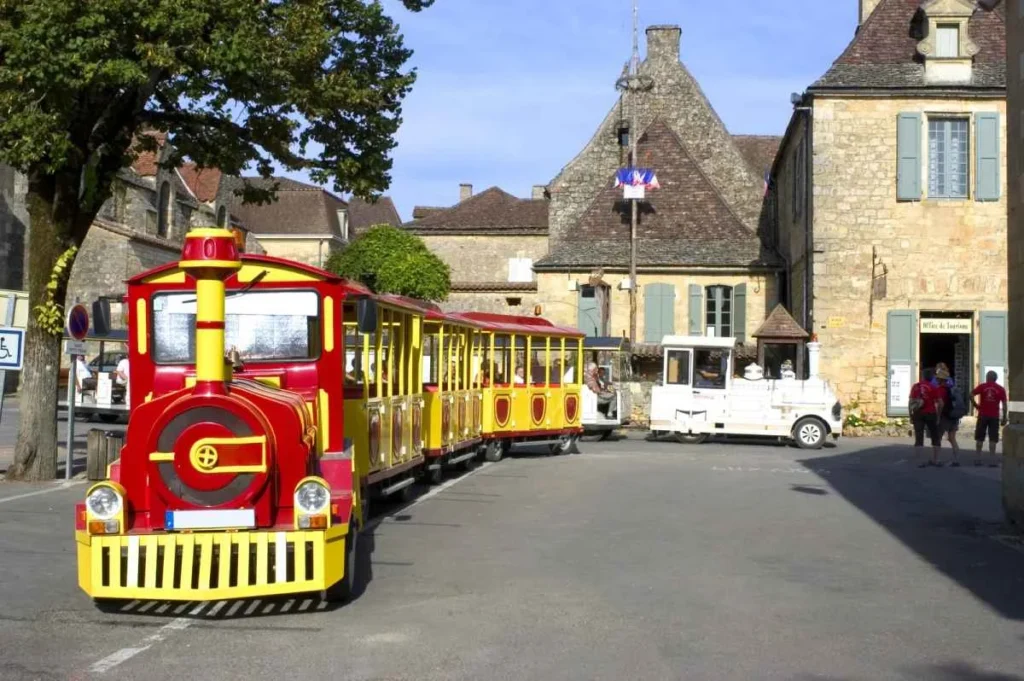
After a full day of castles and medieval towns, Day 2 takes a different turn—deep into prehistory, nature, and quiet beauty. This is the side of Périgord that feels ancient, peaceful, and utterly unique.
Morning: Step into the Stone Age at Lascaux IV or Font-de-Gaume
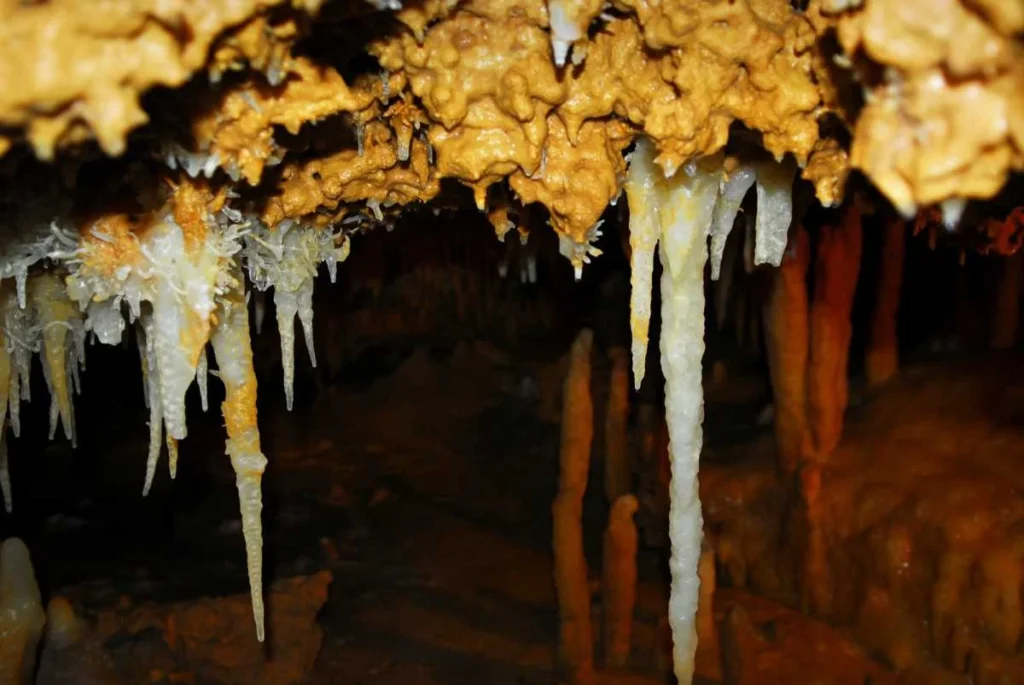
Start the day in the Vézère Valley, often called the “Valley of Man” for its insane concentration of prehistoric sites.
Your first stop: Lascaux IV, the cutting-edge replica of the original Lascaux cave (which has been closed to preserve its ancient art). This ultra-modern museum experience brings 17,000-year-old cave paintings to life with immersive lighting, sound, and interactive exhibits. It’s great for all ages and super well done.
If you’re after something more raw and original, and you manage to score a reservation (they book fast), Font-de-Gaume is one of the last caves in France still open to the public with original Paleolithic art.
Did you know? Lascaux’s cave art dates back over 17,000 years, making it one of the oldest known examples of human artistic expression on the planet.
Midday: Lunch in Les Eyzies & the Museum of Prehistory
Head to Les Eyzies-de-Tayac, the “Capital of Prehistory.” This small village is situated beneath massive limestone cliffs and is rich in archeological significance.
Grab lunch at Restaurant le Centenaire or Le Cro-Magnon, both of which offer hearty regional dishes—think duck confit, walnut salad, and tarte aux noix.
If you’re not too full, the National Museum of Prehistory is right there and worth a quick visit. It’s compact but full of incredible artifacts that tie into the region’s cave systems and discoveries.
Afternoon: Gardens of Marqueyssac or Limeuil
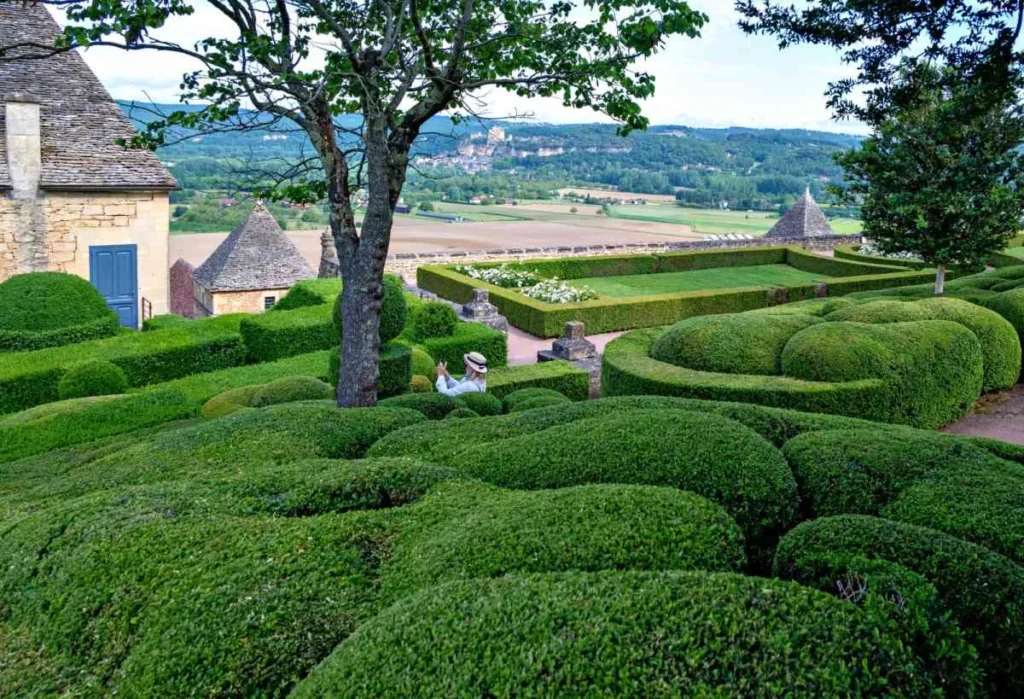
To wind down your trip, head to one of the Dordogne’s most enchanting gardens.
- Marqueyssac is famous for its 150,000+ hand-pruned boxwoods (seriously), winding cliffside paths, and views that stretch for miles over the Dordogne Valley. You can easily spend 1–2 hours here wandering and taking it all in.
- Limeuil is another stunning option, where the gardens overlook the confluence of the Dordogne and Vézère rivers. It’s quieter, a bit more relaxed, and has a charming village atmosphere.
Both are family-friendly, photogenic, and great for a peaceful end to your second day.
Optional Add-On: Wine Tasting in Périgord Pourpre
If you’ve got time and energy left, make a short detour into Périgord Pourpre for a wine tasting near Bergerac.
This area produces Bergerac AOC wines—less famous than Bordeaux, but still full-bodied and flavorful. Some top domaines include:
- Château de Monbazillac (for sweet wines with a view)
- Château Feely (organic and biodynamic wines)
Most tastings are casual, often led by the winemakers themselves.
Hidden Gems to Squeeze In If You Have Extra Time for a Weekend in Perigord
If you’ve got a little wiggle room in your weekend Périgord itinerary—or you’re already plotting your return trip—there are a few lesser-known spots worth slipping into your plans. These places are quieter, a bit off the radar, and full of local charm.
La Roque-Gageac

Often called one of the “Most Beautiful Villages in France,” this riverside town looks like it was carved right into the cliffside. Stroll along the riverfront, pop into tiny artisan shops, or take a short hike to the bamboo garden and troglodyte fort above the village. The view is unreal.
Saint-Léon-sur-Vézère
Small but magical, this riverside village is pure storybook. With stone houses, a Romanesque church, and a quiet, peaceful vibe, it’s perfect for a picnic or a lazy paddle on the river. It’s also a great base if you’re exploring the nearby caves or prehistoric sites.
Château de Commarque
If you want ruins, mystery, and atmosphere, this one’s for you. Hidden in a forested valley, Château de Commarque feels like a real discovery. The hike is part of the fun, and the site includes troglodyte dwellings, a keep you can climb, and panoramic views of untouched countryside.
Bonus stat: Dordogne has over 1,000 castles and manors, more than any other department in France —and Commarque is one of the most hauntingly beautiful.
These spots might not make every top-10 list, but that’s what makes them special. If your goal is to really connect with the soul of Périgord, these places will steal your heart.
What to Eat for Weekend in Perigord & Where to Find It
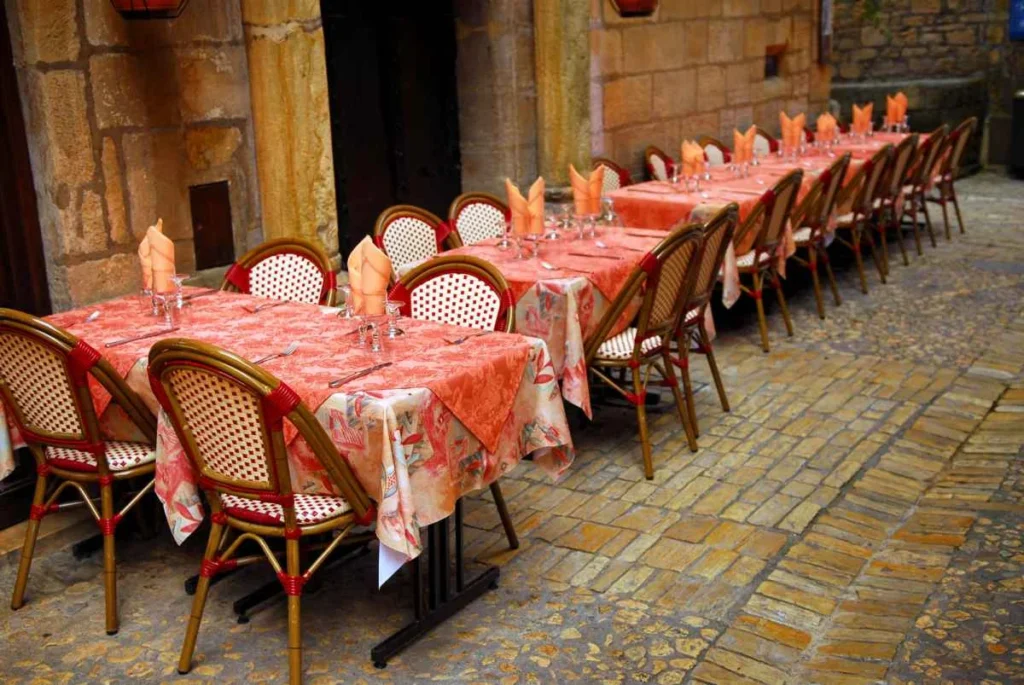
Let’s be real—half the reason to spend a weekend in Périgord is the food. This region is a heavyweight in French gastronomy. Think rich, earthy flavors, rustic recipes passed down for generations, and ingredients so local, they might’ve been picked or hunted that morning.
Here’s what you should try, and where to find the best stuff.
Truffles: The Black Gold of Périgord
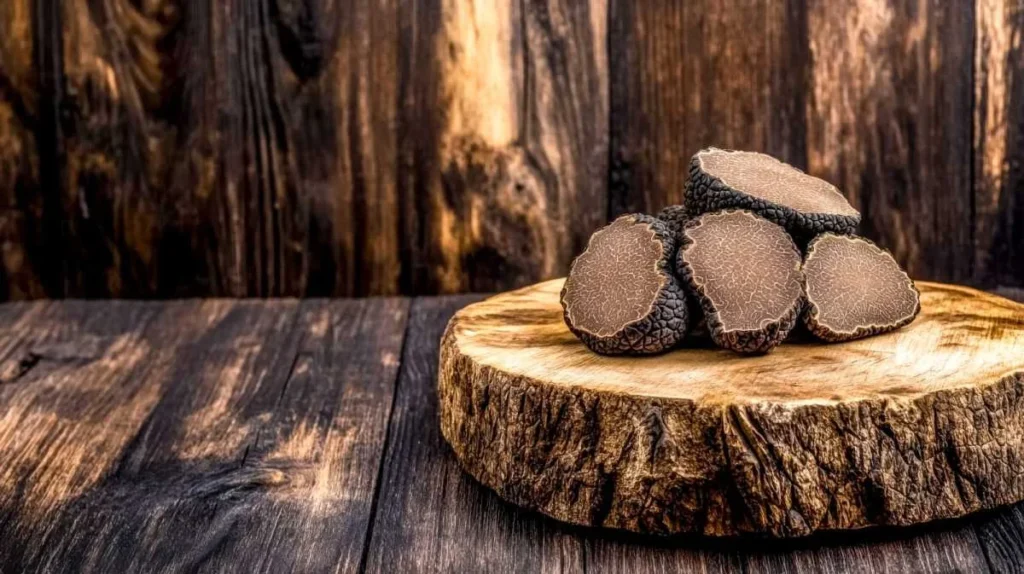
If you’re visiting between December and March, it’s black truffle season, and Périgord is the place to indulge. Whether shaved over eggs, infused into sauces, or stirred into risotto, these funky little gems are culinary royalty here.
Where to try them:
- Restaurant Le Vieux Logis (Trémolat) – upscale and truffle-focused
- Truffle markets in Sarlat (December–February)
Fun fact: France produces around 30–35 tons of black truffles each year, and Périgord is one of the top regions for their cultivation.
Duck, Foie Gras & Confit
Duck is king here—grilled, stewed, roasted, or turned into foie gras. It is (slow-cooked duck leg) and magret de canard (duck breast) are on nearly every menu. Foie gras is a local delicacy, and you’ll find it at markets, gourmet shops, and farm producers across the region.
Where to eat it:
- Ferme-Auberge spots around Sarlat (farm-to-table style)
- Le Bistro de l’Octroi (Sarlat) – classic duck dishes, cozy vibe
Market Fresh Everything
The local marchés (markets) are a feast for the senses. Expect walnuts (often used in pastries or oils), honey, strawberries (in spring), mushrooms, cheese, and handmade charcuterie.
Top markets:
- Sarlat-la-Canéda (Wednesdays & Saturdays)
- Le Bugue (Tuesdays)
- Issigeac (Sundays – known for being lively and charming)
Sweet Treats & Regional Desserts
- Walnut tart (tarte aux noix) – buttery and nutty, found everywhere
- Cabécou – a soft goat cheese often served warm on salad
- Canelés – small Bordeaux-region cakes that pair beautifully with coffee
Wines of Périgord
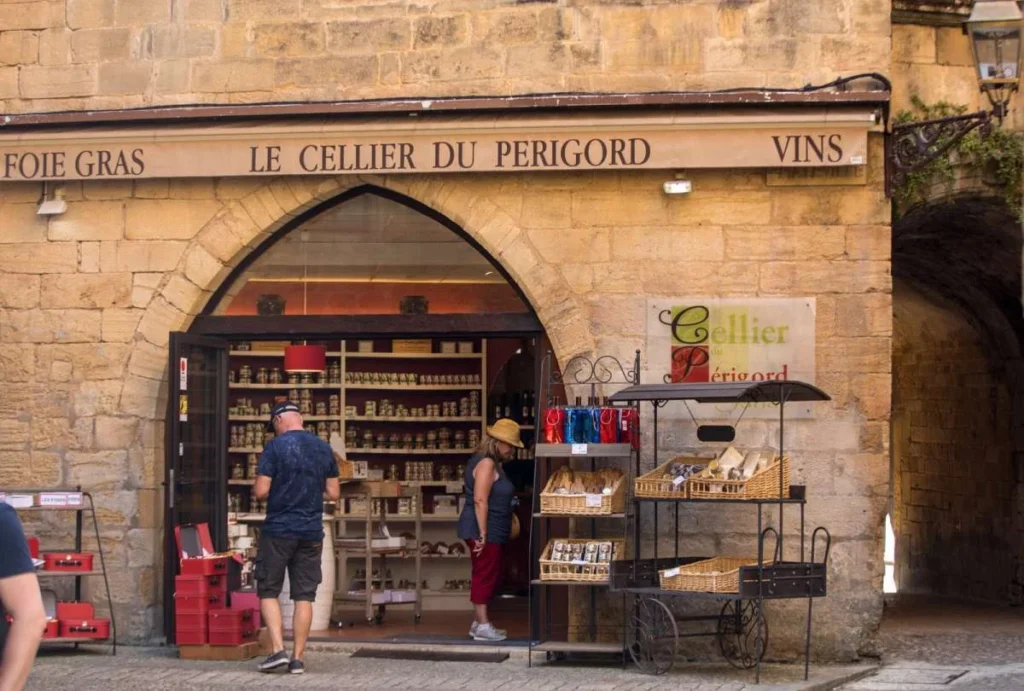
Don’t overlook the local wine scene. Bergerac reds are full-bodied and smooth, while Monbazillac dessert wines are golden, sweet, and delicious, particularly when paired with foie gras.
Where to sip:
- Wine bars in Sarlat
- Vineyards near Bergerac or Monbazillac
Why Château de Lasfonds Is the Perfect Base for Your Weekend in Périgord

When planning your weekend in Périgord, location and atmosphere matter—and Château de Lasfonds delivers both. This 17th-century château isn’t just a place to sleep; it’s an authentic experience of Périgord’s charm, elegance, and peaceful countryside.
Tucked away in a serene corner of the region, Château de Lasfonds offers a rare blend of historic character and modern comfort. The stone architecture and traditional interiors preserve the building’s heritage, while the carefully restored rooms offer cozy beds, updated bathrooms, and thoughtful touches throughout.
It’s ideal for couples seeking romance, families looking for a home base with space to unwind, or anyone who wants to trade generic hotel rooms for something with soul.
The team at Château de Lasfonds is also familiar with the area inside and out. They’re happy to help with restaurant recommendations, itinerary tweaks, or directions to lesser-known gems nearby.
Want to make your Périgord weekend even more memorable?
Book your stay at Château de Lasfonds and experience the region the way it was meant to be—relaxed, authentic, and unforgettable.
Final Tips Before You Go
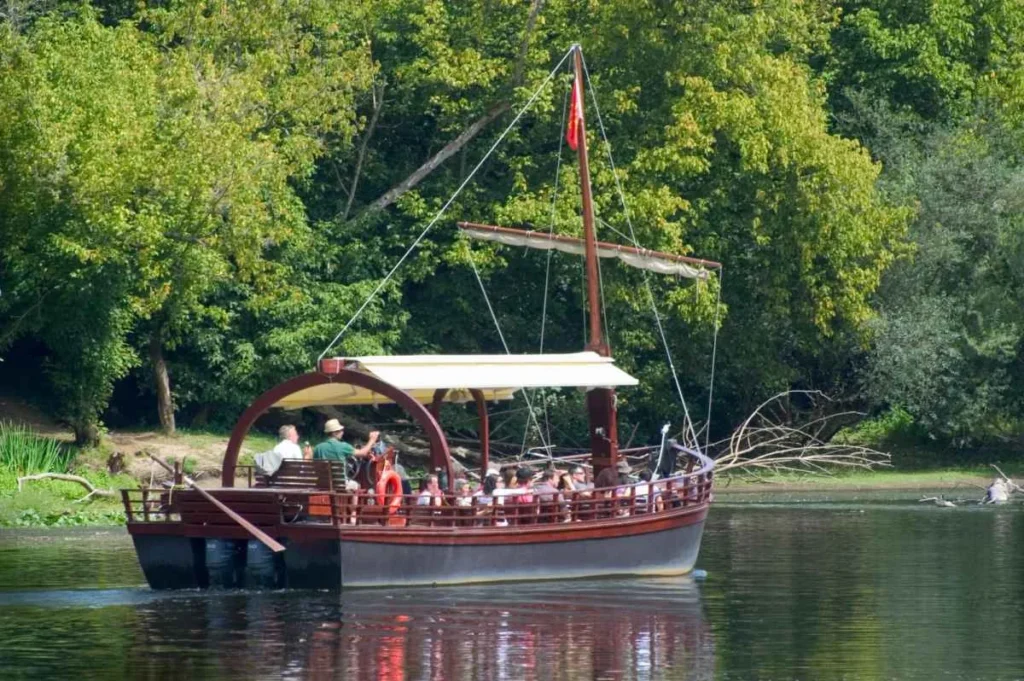
Before you pack your bags for a weekend in Périgord, here are a few last-minute tips to help your trip go smoothly—and make it even more enjoyable.
Best Time to Visit
The region shines in spring (April–June) and fall (September–October). These months offer mild weather, fewer crowds, and beautiful colors in the landscape. Summer is the peak tourist season, particularly in July and August, so book your trip early if you’re traveling during this time.
What to Pack
- Comfortable shoes for cobbled streets and castle steps
- Layers—mornings can be cool, even in summer
- Reusable water bottle for hikes and markets
- A daypack for carrying market finds, wine, or picnic gear
And don’t forget a power adapter if you’re coming from outside Europe.
Language Tips
Basic French goes a long way here. While some people in tourism speak English, especially in bigger towns, many locals appreciate a simple “bonjour,” “merci,” or “s’il vous plaît.”
Get Off the Beaten Path
Don’t overplan every hour. Some of the best moments happen when you turn off the main road and discover a quiet village, a view you weren’t expecting, or a family-run café with no menu—just what’s fresh today.
FAQ — Weekend in Perigord
For 2 nights and 2 days, expect your budget to range from €250 to €450 per person (mid-range). This covers accommodation (château/B&B), car rental, meals at quality restaurants, entrance fees, and modest extras. If you opt for an upscale experience (luxury stay, private tours), double that. During the off-peak season, prices can be slightly lower.
Some parts are tough, such as medieval streets, cobbled alleys, steps, and narrow château passages. But many museums, gardens, and newer attractions provide ramps or accessible paths. Call ahead to places like Lascaux IV or Château de Lasfonds to confirm access to elevators or ramps. Bring a lightweight, foldable stroller for flexibility.
Yes, many local guides offer private walking tours, food tours, or archaeology-focused tours that cater to small groups (2–6 people). These let you move at your pace, ask more questions, and often access spots regular tours skip. Booking a few days in advance is wise, especially in high season.
In Périgord, people appreciate politeness: always say “Bonjour” when entering shops or restaurants. Dress is casual but neat in towns (avoid beachwear outside). Dining is more relaxed—meals may stretch longer than you expect. It’s customary to bring back small gifts (local honey, truffles) if staying with hosts.
Absolutely. Especially for well-known restaurants, cave visits (Font-de-Gaume, Lascaux), and château tours—weekends can fill fast. Reserve at least 2–3 days in advance during peak season. For less busy places, walking in can work, but be sure not to miss your must-see spots.
It’s limited. Buses and trains connect a few towns (e.g., Sarlat, Périgueux), but many scenic sites, rural villages, and gardens aren’t reachable by public transit. Use trains for initial arrival or departure, but count on a car or local taxi/transfer services for flexibility once you’re in the region.
Near Beynac, there’s a riverside path that lets you see castle façades from below. Around Marqueyssac, cliffside walking routes offer spectacular views off narrow stone steps. In Les Eyzies, forested trails behind the village lead to hidden vantage points and caves. Wear good shoes and carry water—it’s really the countryside, not manicured parks.
Cards (Visa, Mastercard) are widely accepted in restaurants, hotels, and shops in larger villages. However, in small cafés, markets, and rural vendors’ stalls (especially for cheese, truffles, or walnuts), cash is often preferred. Carry €50–€100 in small bills/coins just in case. ATMs exist in towns, but rural ATM service can be unreliable.
Book accommodations with gated entrances, private staff, and secure parking. Ask about in-house security or concierge support. Avoid oversharing your location on social media during your stay. For high-value items like watches or tech, use in-room safes and insurance. If you’re moving between multiple properties, request discreet transfers to maintain privacy and minimize unwanted attention.
Yes—larger towns like Sarlat, Bergerac, and Périgueux have pharmacies with weekend hours (look for “Pharmacie de Garde”) and medical clinics. For emergencies, hospitals in Bergerac or Périgueux are your go-to. Carry travel insurance info and a basic first aid kit (bandages, pain reliever, insect repellent).
Definitely. Birdlife, deer, and small mammals (foxes, rabbits) are common in forested parts. Parc le Bournat and Réserve Naturelle des Marais de la Dordogne are good nature spots. Go early morning or evening for best wildlife viewing. Bring binoculars and respect quiet areas.
Tipping is appreciated but not mandatory. In cafés or small meals, rounding up to the nearest euro or leaving 5–10 % is generous. In a full-service restaurant, 10 % is ample. If service is free or included (“service compris”), you can still leave something extra for exceptional service.
Périgord is very safe, including late in towns like Sarlat or Domme. Crime is minimal. Continue usual precautions—lock your car, don’t leave valuables in plain sight, stay aware in unfamiliar areas. Night walks in well-lit medieval streets are quite pleasant. In rural zones, avoid walking into dim paths without familiarity.
A good torch or headlamp (many châteaux or caves have dim zones), a universal plug adapter, a refillable water bottle, a portable phone charger, grain-proof pouches for snack nuts, and a lightweight rain shell. Even in summer, some early mornings or evenings can be chilly, so a light sweater helps.
Yes—many villages host night markets, music on the terraces (concerts outdoors), local gastronomy fairs, and artisan nights on weekends especially in summer. For example, some towns host “marché nocturne” (evening markets) with food, crafts, and live music. Check each village’s official calendar or ask your château hosts for what’s on during your stay.
